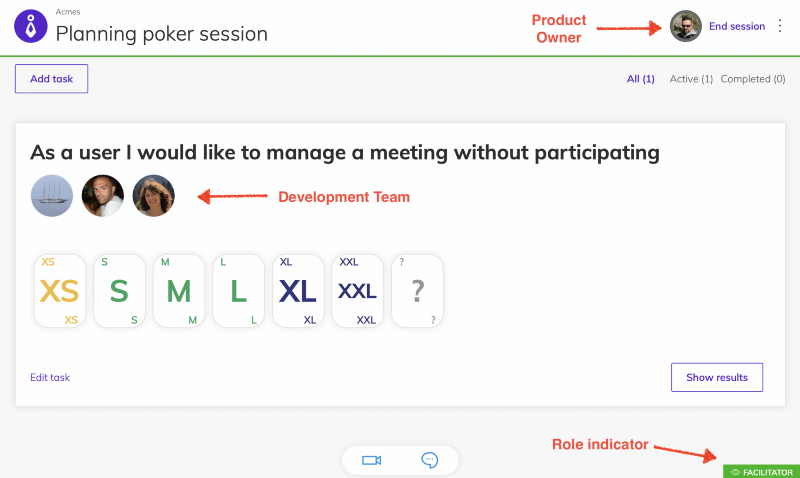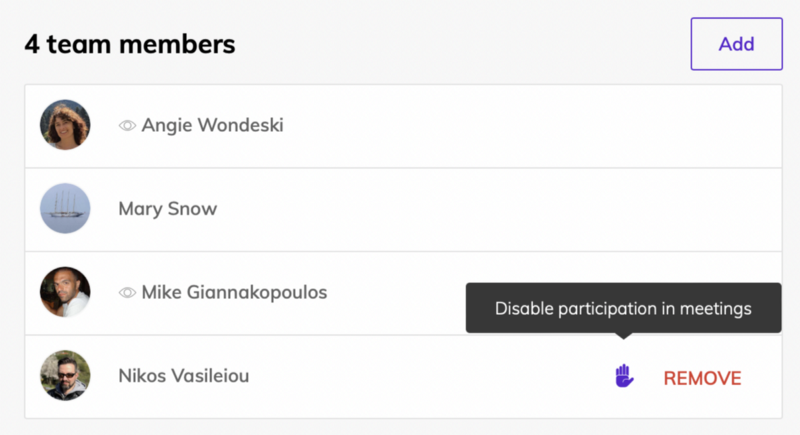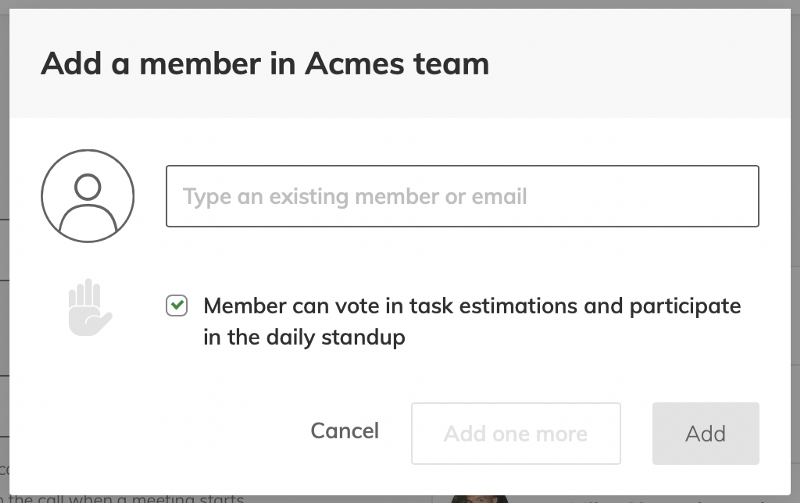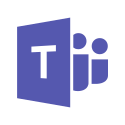
Chickens & Pigs in Team O'clock

Ken Schwaber created “The Chicken and Pig Story” as a way to differentiate people contributing to the outcome of a specific project, by separating the actual contributors from the stakeholders involved.
A pig and a chicken are walking down the street.
The chicken looks at the pig and says, “Hey, why don’t we open a restaurant?”
The pig looks at the chicken and replies, “Good idea, what are you going to call it?”
The chicken thinks about it and says, “Why don’t we call it Eggs and Bacon?”
“I don’t know,” says the pig, “you’d just be involved, but for me it would be a commitment.”
In the metaphor above and in the context of Scrum, pigs are considered the actual Scrum team, e.g., the Development team, the Product Owner, and the Scrum Master. Chickens are the various stakeholders, such as managers, customers, etc., who could eventually participate in spring planning or sprint reviews, offering advisory roles.

Participation settings
With Team O’Clock, you can manage your Scrum rituals in a remote setting. And in the team settings, you have the option to fine-tune participation rules for your members, by choosing between two roles:
Participants:
members that take an active role in the standup or planning poker meeting.
Observers:
members that have a passive role and can observe or facilitate a meeting.

Participants add daily standup notes or place votes in planning poker estimation sessions. This is the default setting.
Observers may visit the meetings, and observe the procedure of those events.
Both roles can facilitate a meeting if needed, for example by adding tasks or user stories for estimation in planning poker sessions.

For example, Product Owners could be marked as observers so that they create planning poker meetings and add tasks for sizing, but not participate in the actual estimation.
Inside the ceremonies
Participation settings affect standup and planning poker sessions (retrospective meetings are not affected).
Inside the meetings, there are several UI elements to indicate the participation role. For example, check the image below, where a product owner can add user stories for estimation, having the development team estimate the effort.
Explore more on how Team O’clock can level-up your agile ceremonies, by giving it a try today.

More articles to check

Assist your team's growth with our partnership program:








